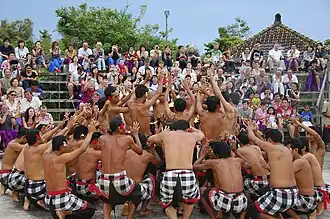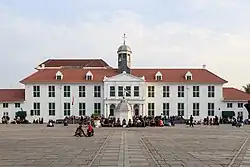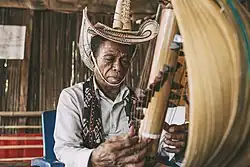Portal:Indonesia
Selamat Datang / Welcome to the Indonesian Portal
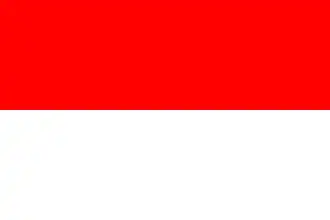
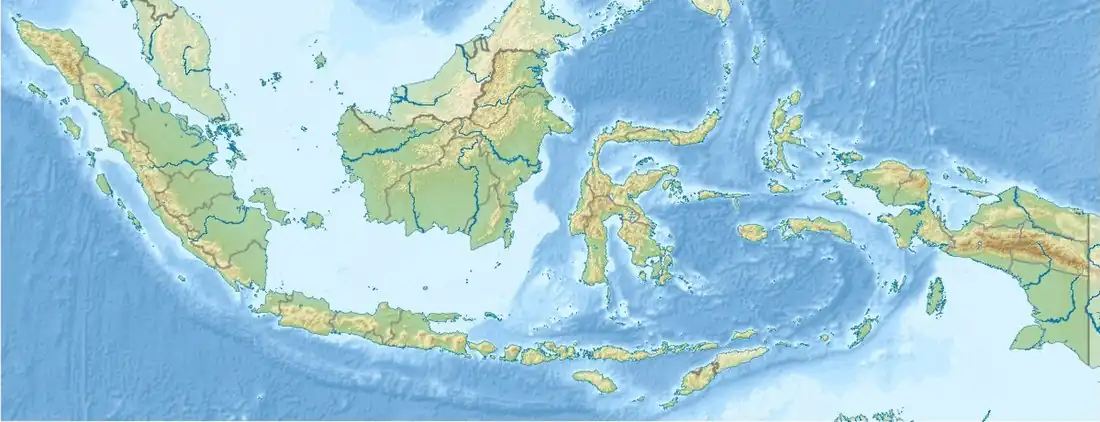
Indonesia, officially the Republic of Indonesia, is a country in Southeast Asia and Oceania, between the Indian and Pacific oceans. Comprising over 17,000 islands, including Sumatra, Java, Sulawesi, and parts of Borneo and New Guinea, Indonesia is the world's largest archipelagic state and the 14th-largest country by area, at 1,904,569 square kilometres (735,358 square miles). With over 280 million people, Indonesia is the world's fourth-most-populous country and the most populous Muslim-majority country. Java, the world's most populous island, is home to more than half of the country's population.
Indonesia operates as a presidential republic with an elected legislature and consists of 38 provinces, nine of which have special autonomous status. Jakarta, the largest city, is the world's second-most-populous urban area. Indonesia shares land borders with Papua New Guinea, Timor-Leste, and East Malaysia, as well as maritime borders with Singapore, Peninsular Malaysia, Vietnam, Thailand, the Philippines, Australia, Palau, and India. Despite its large population and densely populated regions, Indonesia has vast areas of wilderness that support one of the world's highest levels of biodiversity.
Indonesian society comprises hundreds of ethnic and linguistic groups, with Javanese being the largest. The nation's identity is unified under the motto Bhinneka Tunggal Ika, defined by a national language, cultural and religious pluralism, a history of colonialism, and rebellion against it. A newly industrialised country, Indonesia's economy ranks as the world's 17th-largest by nominal GDP and the 7th-largest by PPP. As the world's third-largest democracy and a middle power in global affairs, the country is a member of several multilateral organisations, including the United Nations, World Trade Organization, G20, MIKTA, BRICS and a founding member of the Non-Aligned Movement, Association of Southeast Asian Nations, East Asia Summit, APEC and the Organisation of Islamic Cooperation. (Full article...)
Selected article -
Jakarta (/dʒəˈkɑːrtə/ ⓘ; Indonesian pronunciation: [dʒaˈkarta] ⓘ, Betawi: Jakartè), officially the Special Capital Region of Jakarta (Indonesian: Daerah Khusus Ibukota Jakarta; DKI Jakarta) and formerly known as Batavia until 1949, is the capital and largest city of Indonesia and an autonomous region at the provincial level. Lying on the northwest coast of Java, the world's most populous island, Jakarta is the largest metropole in Southeast Asia and serves as the diplomatic capital of ASEAN. The Special Region has a status equivalent to that of a province and is bordered by the province of West Java to the south and east and Banten to the west. Its coastline faces the Java Sea to the north, and it shares a maritime border with Lampung to the west. Jakarta's metropolitan area is ASEAN's second largest economy after Singapore. In 2023, the city's GDP PPP was estimated at US$724.010 billion.
Jakarta is the economic, cultural, and political centre of Indonesia. Although Jakarta extends over only 661.23 km2 (255.30 sq mi) and thus has the smallest area of any Indonesian province, its metropolitan area covers 7,076.31 km2 (2,732.18 sq mi), which includes the satellite cities of Bogor, Depok, Tangerang, South Tangerang, and Bekasi, and has an estimated population of 32.6 million as of 2022, making it the largest urban area in Indonesia and the second-largest in the world (after Tokyo). Jakarta ranks first among the Indonesian provinces in the human development index. Jakarta's business and employment opportunities, along with its ability to offer a potentially higher standard of living compared to other parts of the country, have attracted migrants from across the Indonesian archipelago, making it a melting pot of numerous cultures. (Full article...)
Selected picture

Photographer: Rita Sugihardiyah at KapanLagi.com; License: Creative Commons CC-BY-SA
Selected foods and cuisines -
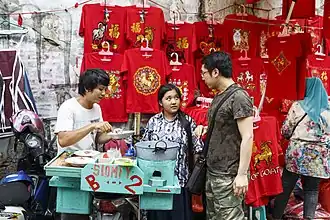
Chinese Indonesian cuisine (Indonesian: Masakan Tionghoa-Indonesia, simplified Chinese: 印尼中华料理; traditional Chinese: 印尼中華料理; pinyin: yìnní zhōnghuá liàolǐ; Pe̍h-ōe-jī: Ìn-nî Tiong-hôa Liāu-lí) is characterized by the mixture of Chinese with local Indonesian style. Chinese Indonesians, mostly descendant of Han ethnic Hokkien and Hakka speakers, brought their legacy of Chinese cuisine, and modified some of the dishes with the addition of Indonesian ingredients, such as kecap manis (sweet soy sauce), palm sugar, peanut sauce, chili, santan (coconut milk) and local spices to form a hybrid Chinese-Indonesian cuisine. Some of the dishes and cakes share the same style as in Malaysia and Singapore, known as Nyonya cuisine by the Peranakan. (Full article...)
Related portals
Religions in Indonesia
Southeast Asia
Other countries
Selected biography -
Abisin Abbas (Indonesian pronunciation: [aˌbisɪn ˈabas]; 26 February 1902 – 20 October 1961), better known by his pseudonym Andjar Asmara (Indonesian pronunciation: [ˌaɲd͡ʒar asˈmara]), was a dramatist and filmmaker active in the cinema of the Dutch East Indies. Born in Alahan Panjang, West Sumatra, he first worked as a reporter in Batavia (modern-day Jakarta). He became a writer for the Padangsche Opera in Padang, where he developed a new, dialogue-centric style, which later spread throughout the region. After returning to Batavia in 1929, he spent over a year as a theatre and film critic. In 1930 he joined the Dardanella touring troupe as a writer. He went to India in an unsuccessful bid to film his stage play Dr Samsi.
After leaving Dardanella in 1936, Andjar established his own troupe. He also worked at a publishers, writing serials based on successful films. In 1940 he was asked to join The Teng Chun's company, Java Industrial Film, helping with marketing and working as a director for two productions. After the Japanese occupation, during which time he stayed in theatre, Andjar made a brief return to cinema. He directed three films in the late 1940s and wrote four screenplays, which were produced as films in the early 1950s. He published a novel, Noesa Penida (1950). Afterward he worked for the remainder of his life writing serials based on local films and publishing film criticism. Historians recognise him as a pioneer of theatre and one of the first native Indonesian film directors, although he had little creative control of his productions. (Full article...)
Did you know -
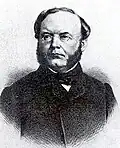
- ... that Dutch clergyman W. R. van Hoëvell (pictured) was a radical and eloquent spokesman against Dutch colonialism in the East and West Indies?
- ... that the debut album of Gita Gutawa featured a song written by eight people?
- ... that the first Arab settlements in Indonesia may date from the fifth century?
More Did you know (auto generated)

- ... that even though a village said that it did not want a church, Indonesian politician Thoriqul Haq allocated land and money to build one along with a musalla?
- ... that Indonesian legislator Alifuddin pushed for the passage of an anti-LGBT "Family Resilience" law in response to the publicization of an incest-fantasy Facebook group?
- ... that Soemartini was appointed as the chief of the National Archives of Indonesia after working in the agency for a year?
- ... that the birth of Christianity in Minahasa, Indonesia, is celebrated annually on June 12, the day that Johann Friedrich Riedel set foot in Manado?
- ... that Malinau Kota, Indonesia, with 31 percent of the population of Malinau Regency, is home to more than 70 percent of its registered restaurants?
- ... that in 1993, Indonesia's home affairs minister Yogie Suardi Memet used thugs to disrupt the opposition Indonesian Democratic Party's national congress?
In this month

- 4 August 1992 – Susi Susanti and Alan Budikusuma win Indonesia's first gold medals at the Olympics in Barcelona
- 15 August 1962 – The New York Agreement, transferring Western New Guinea to Indonesia, is signed
- 17 August 1945 – Indonesia proclaims its independence (pictured)
- 24 August 1962 – The oldest television network in Indonesia, TVRI, begins broadcasting
- 26–27 August 1883 – In the Sunda Strait, Krakatoa erupts, killing 36,417 people
General images
Topics
Categories

New articles
Rules | Match log | Results page (for watching) | Last updated: 2025-08-21 19:58 (UTC)
Note: The list display can now be customized by each user. See List display personalization for details.
- Yudai Okimoto (edit | talk | history | links | watch | logs | tools) by BD85 (talk · contribs · new pages (1)) started on 2025-08-21, score: 21
- Harina (train) (edit | talk | history | links | watch | logs | tools) by Sammi578 (talk · contribs · new pages (1)) started on 2025-08-21, score: 131
- Derwent Kermode (edit | talk | history | links | watch | logs | tools) by C411978 (talk · contribs · new pages (10)) started on 2025-08-21, score: 72
- Monumen Nasional (Transjakarta) (edit | talk | history | links | watch | logs | tools) by Mtlh01p (talk · contribs · new pages (13)) started on 2025-08-21, score: 62
- Senayan Bank Jakarta (Transjakarta) (edit | talk | history | links | watch | logs | tools) by Mtlh01p (talk · contribs · new pages (13)) started on 2025-08-21, score: 42
- Kebon Sirih (Transjakarta) (edit | talk | history | links | watch | logs | tools) by Mtlh01p (talk · contribs · new pages (13)) started on 2025-08-21, score: 42
- Didik Eko Pujianto (edit | talk | history | links | watch | logs | tools) by Jeromi Mikhael (talk · contribs · new pages (22)) started on 2025-08-20, score: 46
- Karet (Transjakarta) (edit | talk | history | links | watch | logs | tools) by Mtlh01p (talk · contribs · new pages (13)) started on 2025-08-19, score: 42
- Indosiren (edit | talk | history | links | watch | logs | tools) by Daeng Dino (talk · contribs · new pages (3)) started on 2025-08-20, score: 81
- Hendra Halim (edit | talk | history | links | watch | logs | tools) by Jeromi Mikhael (talk · contribs · new pages (22)) started on 2025-08-20, score: 58
- Derry Aman (edit | talk | history | links | watch | logs | tools) by Jeromi Mikhael (talk · contribs · new pages (22)) started on 2025-08-20, score: 63
- Maja, Lebak (edit | talk | history | links | watch | logs | tools) by Kobokanaeru73 (talk · contribs · new pages (31)) started on 2025-08-19, score: 92
- Penny Dewi Herasati (edit | talk | history | links | watch | logs | tools) by Jeromi Mikhael (talk · contribs · new pages (22)) started on 2025-08-19, score: 63
- 1958 Martin PBM Mariner Crash in Abadan (edit | talk | history | links | watch | logs | tools) by Standardwhale (talk · contribs · new pages (2)) started on 2025-08-19, score: 21
- Separatism in Indonesia (edit | talk | history | links | watch | logs | tools) by Kobokanaeru73 (talk · contribs · new pages (31)) started on 2025-08-19, score: 188
- Lindu, Indonesia (edit | talk | history | links | watch | logs | tools) by Kobokanaeru73 (talk · contribs · new pages (31)) started on 2025-08-19, score: 42
- Merpati Nusantara Airlines Flight 516 (edit | talk | history | links | watch | logs | tools) by Rezakaisar91 (talk · contribs · new pages (65)) started on 2025-08-19, score: 73
- Berlian Helmy (edit | talk | history | links | watch | logs | tools) by Jeromi Mikhael (talk · contribs · new pages (22)) started on 2025-08-19, score: 62
- Dambila (edit | talk | history | links | watch | logs | tools) by Juxlos (talk · contribs · new pages (37)) started on 2025-08-19, score: 73
- Pagaruyung VI inscription (edit | talk | history | links | watch | logs | tools) by Ardzun (talk · contribs · new pages (1)) started on 2025-08-19, score: 42
- Phyllium siccifolium (edit | talk | history | links | watch | logs | tools) by Drägü (talk · contribs · new pages (4)) started on 2025-08-18, score: 23
- Papuarius latirostris (edit | talk | history | links | watch | logs | tools) by Big Blue Cray(fish) Twins (talk · contribs · new pages (59)) started on 2025-08-17, score: 22
- Luzonichthys taeniatus (edit | talk | history | links | watch | logs | tools) by 98.151.143.254 (talk · contribs · new pages (83)) started on 2025-08-18, score: 22
- Polda Metro Jaya (Transjakarta) (edit | talk | history | links | watch | logs | tools) by Mtlh01p (talk · contribs · new pages (13)) started on 2025-08-18, score: 42
- Bundaran Senayan (Transjakarta) (edit | talk | history | links | watch | logs | tools) by Mtlh01p (talk · contribs · new pages (13)) started on 2025-08-18, score: 42
- Masjid Agung (Transjakarta) (edit | talk | history | links | watch | logs | tools) by Mtlh01p (talk · contribs · new pages (13)) started on 2025-08-18, score: 42
- I Gusti Kompyang Manila (edit | talk | history | links | watch | logs | tools) by Jeromi Mikhael (talk · contribs · new pages (22)) started on 2025-08-18, score: 151
- 2025 Sulawesi earthquake (edit | talk | history | links | watch | logs | tools) by Filipinohere (talk · contribs · new pages (1)) started on 2025-08-18, score: 85
- Andreano Erwin (edit | talk | history | links | watch | logs | tools) by Jeromi Mikhael (talk · contribs · new pages (22)) started on 2025-08-17, score: 50
- Society of Champa (edit | talk | history | links | watch | logs | tools) by Kseni-kam (talk · contribs · new pages (8)) started on 2025-08-16, score: 54
- Saud Purwanto Krisnawan (edit | talk | history | links | watch | logs | tools) by Jeromi Mikhael (talk · contribs · new pages (22)) started on 2025-08-17, score: 41
- Potamosilurus taylori (edit | talk | history | links | watch | logs | tools) by Big Blue Cray(fish) Twins (talk · contribs · new pages (59)) started on 2025-08-17, score: 22
- Okto Dorinus Manik (edit | talk | history | links | watch | logs | tools) by Jeromi Mikhael (talk · contribs · new pages (22)) started on 2025-08-17, score: 61
- Hipdut (edit | talk | history | links | watch | logs | tools) by BasalamahM (talk · contribs · new pages (1)) started on 2025-08-17, score: 47
- Luka Cinta (edit | talk | history | links | watch | logs | tools) by DannyMalhotra (talk · contribs · new pages (5)) started on 2025-08-17, score: 38
- Cinta Dalam Sujudku (edit | talk | history | links | watch | logs | tools) by DannyMalhotra (talk · contribs · new pages (5)) started on 2025-08-17, score: 43
- Culture of Champa Society (edit | talk | history | links | watch | logs | tools) by Kseni-kam (talk · contribs · new pages (8)) started on 2025-08-16, score: 54
- Suwartini Wirta (edit | talk | history | links | watch | logs | tools) by Jeromi Mikhael (talk · contribs · new pages (22)) started on 2025-08-16, score: 62
- Battle of Aileu (edit | talk | history | links | watch | logs | tools) by Blessedhussars67 (talk · contribs · new pages (4)) started on 2025-08-16, score: 43
- Listyowati (edit | talk | history | links | watch | logs | tools) by Jeromi Mikhael (talk · contribs · new pages (22)) started on 2025-08-16, score: 42
- Anwar Congo (edit | talk | history | links | watch | logs | tools) by JPHC2003 (talk · contribs · new pages (2)) started on 2025-08-16, score: 81
- The Musical Journey of Dwiki Dharmawan (edit | talk | history | links | watch | logs | tools) by SarahJH07 (talk · contribs · new pages (1)) started on 2025-08-16, score: 73
- Sundabarbus (edit | talk | history | links | watch | logs | tools) by Daeng Dino (talk · contribs · new pages (3)) started on 2025-08-16, score: 50
- Varieties of sambal (edit | talk | history | links | watch | logs | tools) by Native99girl (talk · contribs · new pages (1)) started on 2025-08-16, score: 271
- Ibnu Wahyutomo (edit | talk | history | links | watch | logs | tools) by Jeromi Mikhael (talk · contribs · new pages (22)) started on 2025-08-15, score: 58
- Lumajang Madurese (edit | talk | history | links | watch | logs | tools) by Kobokanaeru73 (talk · contribs · new pages (31)) started on 2025-08-15, score: 160
- Battle of Baucau (edit | talk | history | links | watch | logs | tools) by Blessedhussars67 (talk · contribs · new pages (4)) started on 2025-08-13, score: 53
- Qiān Zhī Fú (edit | talk | history | links | watch | logs | tools) by Thomson Walt (talk · contribs · new pages (9)) started on 2025-08-12, score: 39
- Nina Carolina (edit | talk | history | links | watch | logs | tools) by Kobokanaeru73 (talk · contribs · new pages (31)) started on 2025-08-15, score: 94
- Sanana (disambiguation) (edit | talk | history | links | watch | logs | tools) by Rafaelthegreat (talk · contribs · new pages (39)) started on 2025-08-15, score: 42
- Santo Darmosumarto (edit | talk | history | links | watch | logs | tools) by Jeromi Mikhael (talk · contribs · new pages (22)) started on 2025-08-15, score: 59
- Thai football clubs in Asian competitions (edit | talk | history | links | watch | logs | tools) by Lancepark (talk · contribs · new pages (23)) started on 2025-08-15, score: 67
- M. Ali Pasha (edit | talk | history | links | watch | logs | tools) by Rubab.tahir239 (talk · contribs · new pages (1)) started on 2025-08-10, score: 30
- 2025–26 Persis Solo season (edit | talk | history | links | watch | logs | tools) by Wongso salimun (talk · contribs · new pages (2)) started on 2025-08-14, score: 53
- Rina Soemarno (edit | talk | history | links | watch | logs | tools) by Jeromi Mikhael (talk · contribs · new pages (22)) started on 2025-08-14, score: 63
- Enjoy TV5 (edit | talk | history | links | watch | logs | tools) by Not Spamming (talk · contribs · new pages (3)) started on 2025-08-14, score: 36
- Safi'i Kemamang (edit | talk | history | links | watch | logs | tools) by Kobokanaeru73 (talk · contribs · new pages (31)) started on 2025-08-14, score: 104
- Arief Hidayat (diplomat) (edit | talk | history | links | watch | logs | tools) by Jeromi Mikhael (talk · contribs · new pages (22)) started on 2025-08-14, score: 61
- Helsinki Agreement (Aceh) (edit | talk | history | links | watch | logs | tools) by Zul Alfarisi (talk · contribs · new pages (1)) started on 2025-08-14, score: 41
- Achmad Rizal Purnama (edit | talk | history | links | watch | logs | tools) by Jeromi Mikhael (talk · contribs · new pages (22)) started on 2025-08-14, score: 59
- Jhon Mena (edit | talk | history | links | watch | logs | tools) by Madhon335 (talk · contribs · new pages (4)) started on 2025-08-14, score: 83
- Sudewo (edit | talk | history | links | watch | logs | tools) by Kaythehistorian (talk · contribs · new pages (1)) started on 2025-08-14, score: 83
- 2025 Pati demonstrations (edit | talk | history | links | watch | logs | tools) by Kaliper1 (talk · contribs · new pages (7)) started on 2025-08-13, score: 63
- Agus Priono (edit | talk | history | links | watch | logs | tools) by Jeromi Mikhael (talk · contribs · new pages (22)) started on 2025-08-13, score: 53
- Tom Lembong (edit | talk | history | links | watch | logs | tools) by Rumahkedua (talk · contribs · new pages (2)) started on 2025-08-13, score: 62
- Damián van der Vaart (edit | talk | history | links | watch | logs | tools) by Ortizesp (talk · contribs · new pages (145)) started on 2025-08-13, score: 33
- Free Pasundan Movement (edit | talk | history | links | watch | logs | tools) by Kobokanaeru73 (talk · contribs · new pages (31)) started on 2025-08-13, score: 168
- Kulawi people (edit | talk | history | links | watch | logs | tools) by Kobokanaeru73 (talk · contribs · new pages (31)) started on 2025-08-13, score: 76
- Bank Indonesia Liquidity Aid (edit | talk | history | links | watch | logs | tools) by Theasiancowboy (talk · contribs · new pages (2)) started on 2025-08-13, score: 72
- 2025 Pati Demonstration (edit | talk | history | links | watch | logs | tools) by Kaliper1 (talk · contribs · new pages (7)) started on 2025-08-13, score: 42
- Richie Duta Richardo (edit | talk | history | links | watch | logs | tools) by Fahrurozi.86 (talk · contribs · new pages (31)) started on 2025-08-13, score: 82
- Fikry Cassidy (edit | talk | history | links | watch | logs | tools) by Jeromi Mikhael (talk · contribs · new pages (22)) started on 2025-08-13, score: 38
- Law Formulation Act (edit | talk | history | links | watch | logs | tools) by Argo Carpathians (talk · contribs · new pages (6)) started on 2025-08-13, score: 43
- Opi Bachtiar (edit | talk | history | links | watch | logs | tools) by Thief-River-Faller (talk · contribs · new pages (97)) started on 2025-08-12, score: 53
- Besar Island, Flores (edit | talk | history | links | watch | logs | tools) by Juxlos (talk · contribs · new pages (37)) started on 2025-08-12, score: 73
- Sangkarewangia (edit | talk | history | links | watch | logs | tools) by Daeng Dino (talk · contribs · new pages (3)) started on 2025-08-12, score: 52
- Lake Lebak Wangi (edit | talk | history | links | watch | logs | tools) by Kobokanaeru73 (talk · contribs · new pages (31)) started on 2025-08-12, score: 63
- Free Riau Movement (edit | talk | history | links | watch | logs | tools) by DDG9912 (talk · contribs · new pages (3)) started on 2025-08-12, score: 83
- Vedi Kurnia Buana (edit | talk | history | links | watch | logs | tools) by Jeromi Mikhael (talk · contribs · new pages (22)) started on 2025-08-12, score: 102
- Witjaksono Adji (edit | talk | history | links | watch | logs | tools) by Jeromi Mikhael (talk · contribs · new pages (22)) started on 2025-08-12, score: 48
- Cynoglossus microlepis (edit | talk | history | links | watch | logs | tools) by Phoebus 28 (talk · contribs · new pages (42)) started on 2025-08-12, score: 68
- Jasey Wehrmann (edit | talk | history | links | watch | logs | tools) by Cesarahmad1 (talk · contribs · new pages (3)) started on 2025-08-12, score: 45
- Patience (Agnez Mo song) (edit | talk | history | links | watch | logs | tools) by Bluesatellite (talk · contribs · new pages (2)) started on 2025-08-10, score: 43
- British expedition to Makassar (edit | talk | history | links | watch | logs | tools) by Juxlos (talk · contribs · new pages (37)) started on 2025-08-11, score: 71
- Weliman (edit | talk | history | links | watch | logs | tools) by FrostCompass (talk · contribs · new pages (9)) started on 2025-08-11, score: 62
- Buruh Tani (edit | talk | history | links | watch | logs | tools) by Kaliper1 (talk · contribs · new pages (7)) started on 2025-08-11, score: 123
- Dian Rana (edit | talk | history | links | watch | logs | tools) by Nusantarakita (talk · contribs · new pages (1)) started on 2025-08-11, score: 112
- 2024 West Kutai regency election (edit | talk | history | links | watch | logs | tools) by Juxlos (talk · contribs · new pages (37)) started on 2025-08-11, score: 73
- Eklavya Jagal (edit | talk | history | links | watch | logs | tools) by JacobTheRox (talk · contribs · new pages (13)) started on 2025-08-11, score: 39
- 2024 Kediri mayoral election (edit | talk | history | links | watch | logs | tools) by Juxlos (talk · contribs · new pages (37)) started on 2025-08-11, score: 63
- List of members of the House of Representatives of the United States of Indonesia (edit | talk | history | links | watch | logs | tools) by NFSreloaded (talk · contribs · new pages (2)) started on 2025-08-11, score: 194
- Justiar Noer (edit | talk | history | links | watch | logs | tools) by Juxlos (talk · contribs · new pages (37)) started on 2025-08-10, score: 113
- Malay-Acehnese conflicts (edit | talk | history | links | watch | logs | tools) by OwlCityzen (talk · contribs · new pages (1)) started on 2025-08-10, score: 91
- Samuel Balinsa (edit | talk | history | links | watch | logs | tools) by Madhon335 (talk · contribs · new pages (4)) started on 2025-08-10, score: 83
- Daeng Kemasi (edit | talk | history | links | watch | logs | tools) by Rqiang84 (talk · contribs · new pages (10)) started on 2025-08-10, score: 60
- Daeng Menambun (edit | talk | history | links | watch | logs | tools) by Rqiang84 (talk · contribs · new pages (10)) started on 2025-08-10, score: 90
- Dede Sapari (edit | talk | history | links | watch | logs | tools) by Madhon335 (talk · contribs · new pages (4)) started on 2025-08-10, score: 113
- Indonesia at the World Games (edit | talk | history | links | watch | logs | tools) by Yogwi21 (talk · contribs · new pages (3)) started on 2025-08-10, score: 41
- Overdose (Agnez Mo song) (edit | talk | history | links | watch | logs | tools) by Bluesatellite (talk · contribs · new pages (2)) started on 2025-08-10, score: 43
- Daeng Marewah (edit | talk | history | links | watch | logs | tools) by Rqiang84 (talk · contribs · new pages (10)) started on 2025-08-10, score: 50
- Daeng Chelak (edit | talk | history | links | watch | logs | tools) by Rqiang84 (talk · contribs · new pages (10)) started on 2025-08-10, score: 45
- Miss Grand Indonesia 2025 (edit | talk | history | links | watch | logs | tools) by Thomson Walt (talk · contribs · new pages (9)) started on 2025-08-09, score: 97
- Rama Alexander Asia (edit | talk | history | links | watch | logs | tools) by Juxlos (talk · contribs · new pages (37)) started on 2025-08-09, score: 83
- Take A Chance With Me (edit | talk | history | links | watch | logs | tools) by MelissaFukunaga (talk · contribs · new pages (12)) started on 2025-08-09, score: 53
- Herald Van der Linde (edit | talk | history | links | watch | logs | tools) by Terabyte646 (talk · contribs · new pages (15)) started on 2025-08-09, score: 46
- Rinhat (edit | talk | history | links | watch | logs | tools) by FrostCompass (talk · contribs · new pages (9)) started on 2025-08-09, score: 62
- El John Pageants Festival (edit | talk | history | links | watch | logs | tools) by Penyuntinghandal (talk · contribs · new pages (2)) started on 2025-08-09, score: 203
- Coat of arms of West Java (edit | talk | history | links | watch | logs | tools) by Baqotun0023 (talk · contribs · new pages (4)) started on 2025-08-09, score: 82
- Ismail Thomas (edit | talk | history | links | watch | logs | tools) by Juxlos (talk · contribs · new pages (37)) started on 2025-08-09, score: 83
- Caxambu (footballer) (edit | talk | history | links | watch | logs | tools) by Cesarahmad1 (talk · contribs · new pages (3)) started on 2025-08-09, score: 90
- Fransiskus Xaverius Yapan (edit | talk | history | links | watch | logs | tools) by Juxlos (talk · contribs · new pages (37)) started on 2025-08-09, score: 73
- Frederick Edwin (disambiguation) (edit | talk | history | links | watch | logs | tools) by Juxlos (talk · contribs · new pages (37)) started on 2025-08-08, score: 22
- Influencers (film) (edit | talk | history | links | watch | logs | tools) by Zoolver (talk · contribs · new pages (4)) started on 2025-08-08, score: 33
- Frederick Edwin (edit | talk | history | links | watch | logs | tools) by Juxlos (talk · contribs · new pages (37)) started on 2025-08-08, score: 93
- Darah Garuda (edit | talk | history | links | watch | logs | tools) by Kobokanaeru73 (talk · contribs · new pages (31)) started on 2025-08-08, score: 69
- Indonesia women's national under-21 volleyball team (edit | talk | history | links | watch | logs | tools) by Alcn03 (talk · contribs · new pages (1)) started on 2025-08-08, score: 43
- Dutch East Indies Squadron (edit | talk | history | links | watch | logs | tools) by SailingthroughHistory (talk · contribs · new pages (2)) started on 2025-08-08, score: 64
- I Wayan Adi Arnawa (edit | talk | history | links | watch | logs | tools) by Juxlos (talk · contribs · new pages (37)) started on 2025-08-08, score: 63
- Wijoto (edit | talk | history | links | watch | logs | tools) by Juxlos (talk · contribs · new pages (37)) started on 2025-08-08, score: 83
- Achmad Maschut (edit | talk | history | links | watch | logs | tools) by Juxlos (talk · contribs · new pages (37)) started on 2025-08-08, score: 83
- Neo Putu Pande (edit | talk | history | links | watch | logs | tools) by Skyggestadium (talk · contribs · new pages (1)) started on 2025-08-08, score: 91
- Samsul Ashar (edit | talk | history | links | watch | logs | tools) by Juxlos (talk · contribs · new pages (37)) started on 2025-08-08, score: 93
- Cornelius Crane Pacific Expedition (edit | talk | history | links | watch | logs | tools) by Ca (talk · contribs · new pages (8)) started on 2025-08-07, score: 51
- 2025 FIBA Women's Asia Cup squads (edit | talk | history | links | watch | logs | tools) by Kante4 (talk · contribs · new pages (11)) started on 2025-08-07, score: 56
- Miss Universe Indonesia 2025 (edit | talk | history | links | watch | logs | tools) by Call me PI. (talk · contribs · new pages (2)) started on 2025-08-03, score: 125
- Bangkalan Madurese (edit | talk | history | links | watch | logs | tools) by Kobokanaeru73 (talk · contribs · new pages (31)) started on 2025-08-07, score: 143
- The Fox King (edit | talk | history | links | watch | logs | tools) by Semampunya (talk · contribs · new pages (1)) started on 2025-08-07, score: 53
- Lawe Bulan (edit | talk | history | links | watch | logs | tools) by FrostCompass (talk · contribs · new pages (9)) started on 2025-08-07, score: 62
- 2025 Kamchatka Peninsula earthquake (edit | talk | history | links | watch | logs | tools) by Dora the Axe-plorer (talk · contribs · new pages (0)) started on 2025-07-29, score: 32
WikiProjects
- WikiProject Indonesia
- Portal:Jakarta
- Indonesian Topics Notice Board
- Indonesian Wikipedians
- Wikipedians in Indonesia
Want to help?:
- Articles to improve:
- Requests:
- Indonesian court hierarchy
- Mining in Indonesia (now redirects to Economy of Indonesia#Mining)
- Coffee War
- List of tallest buildings in Bandung
- Stubs
Associated Wikimedia
The following Wikimedia Foundation sister projects provide more on this subject:
-
Commons
Free media repository -
Wikibooks
Free textbooks and manuals -
Wikidata
Free knowledge base -
Wikinews
Free-content news -
Wikiquote
Collection of quotations -
Wikisource
Free-content library -
Wikiversity
Free learning tools -
Wikivoyage
Free travel guide -
Wiktionary
Dictionary and thesaurus
-
 List of all portals
List of all portals -

-

-

-
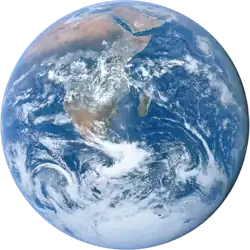
-

-

-

-

-

-
 Random portal
Random portal -
 WikiProject Portals
WikiProject Portals


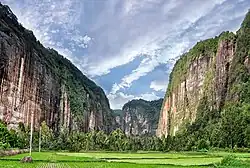
.jpg)
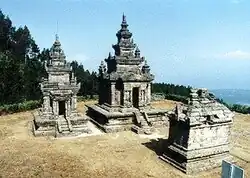
.jpg)
.jpg)
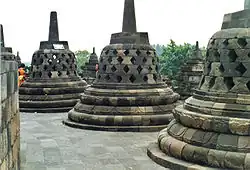
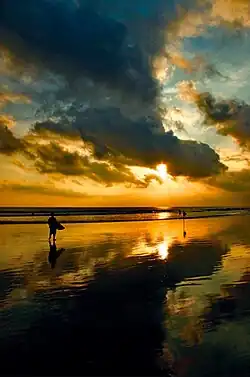

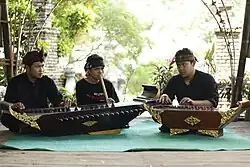
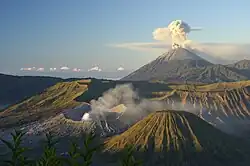
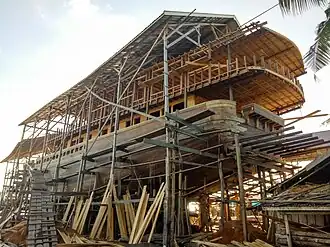
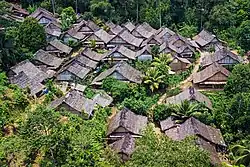
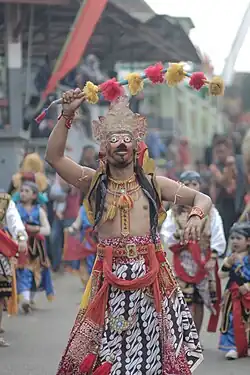
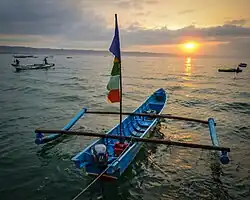
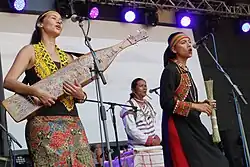

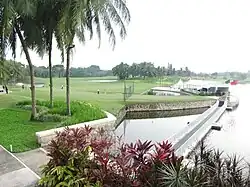
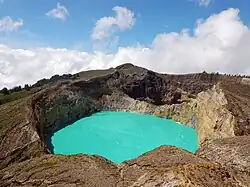

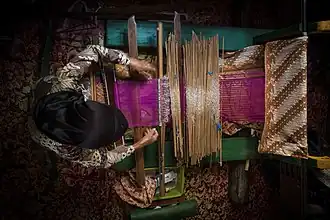
.jpg)
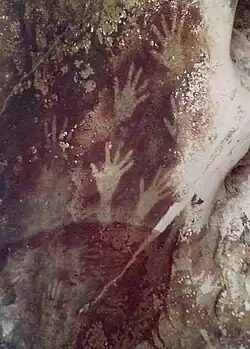
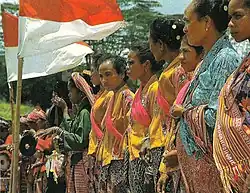
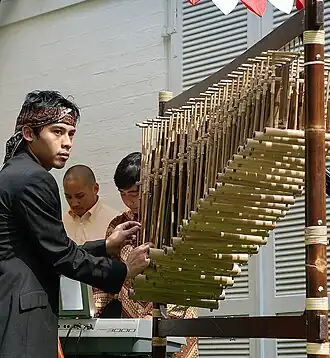
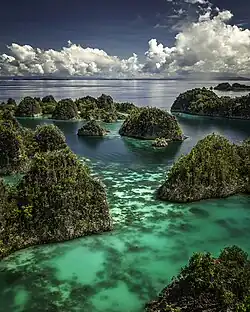
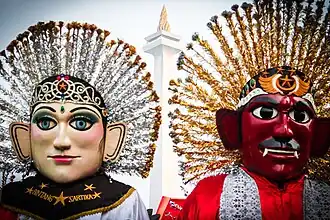
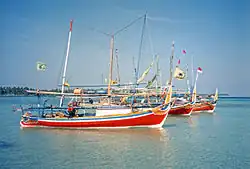

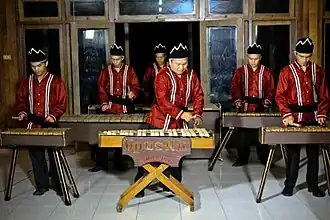


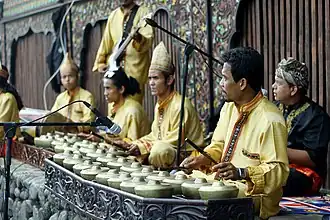


.jpg)
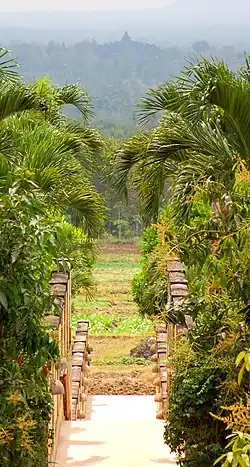

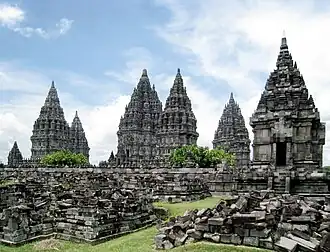

.jpg)

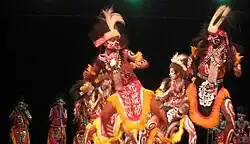
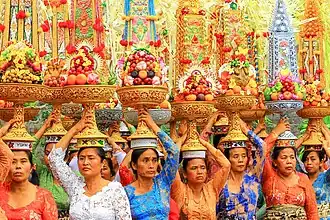
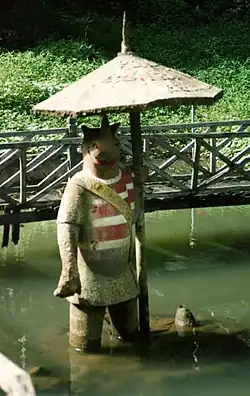

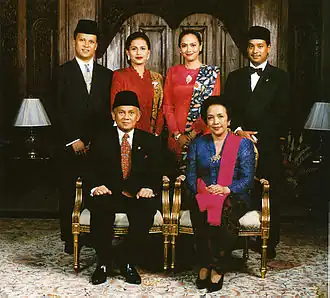


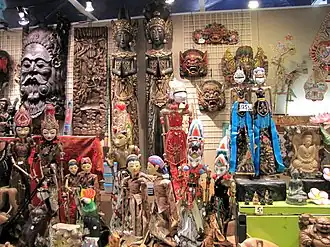
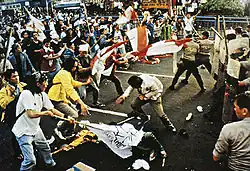
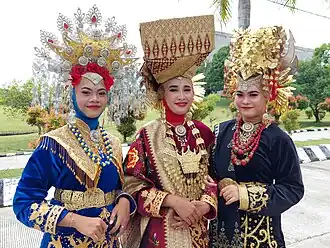
.jpg)
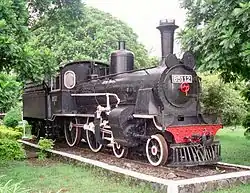
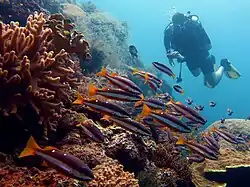

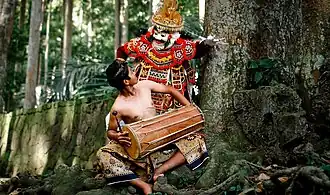
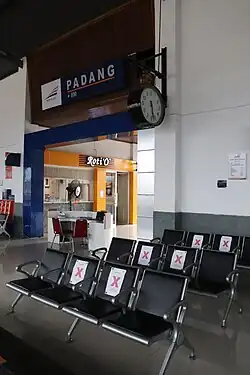
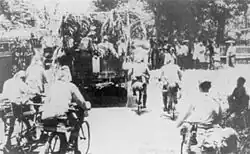

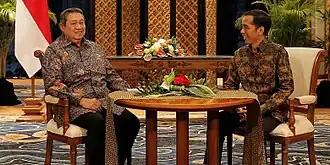
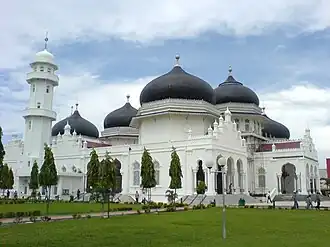

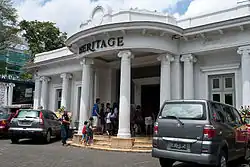
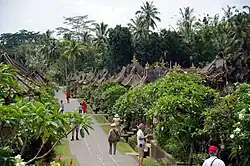
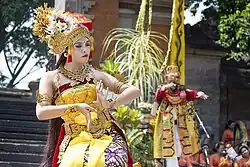

.jpeg)
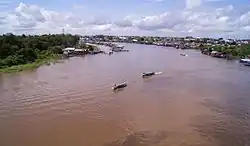
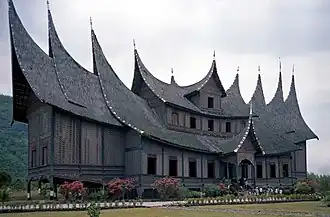
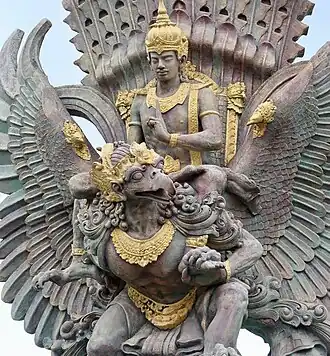


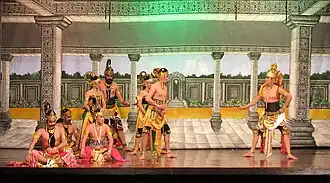
_luisteren_de_Japanse_bevelhebber_kolonel_Kaida_Tatuichi_en_zijn_stafcommandant_majoor_Muiosu_Slioji_aan_dek_van_H_TMnr_10001519.jpg)
.jpg)
.jpg)
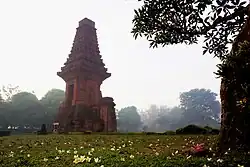
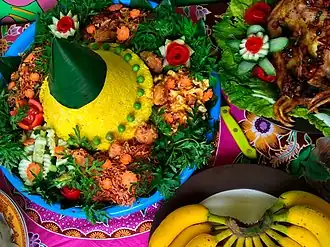

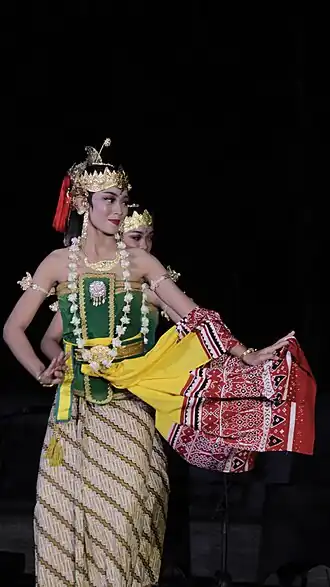


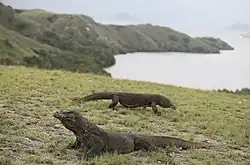
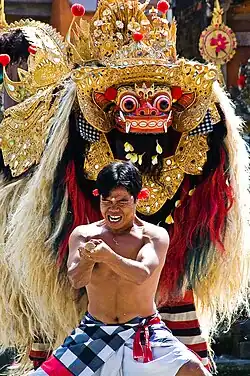

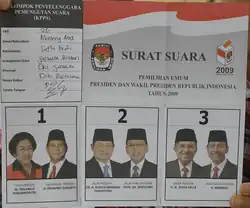


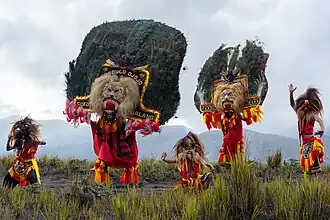

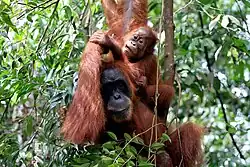

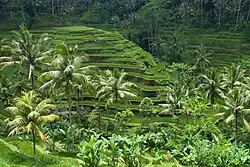
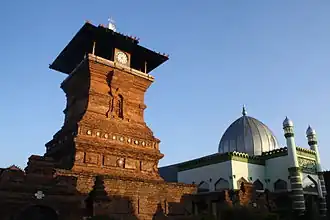

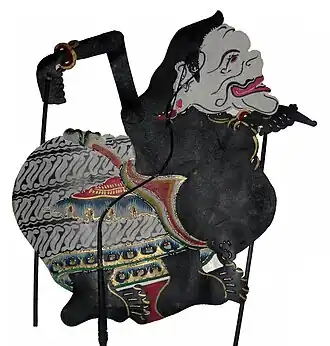

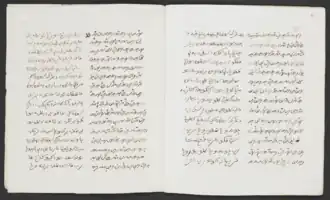



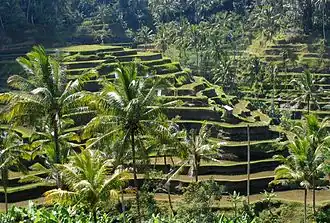
.jpg)
